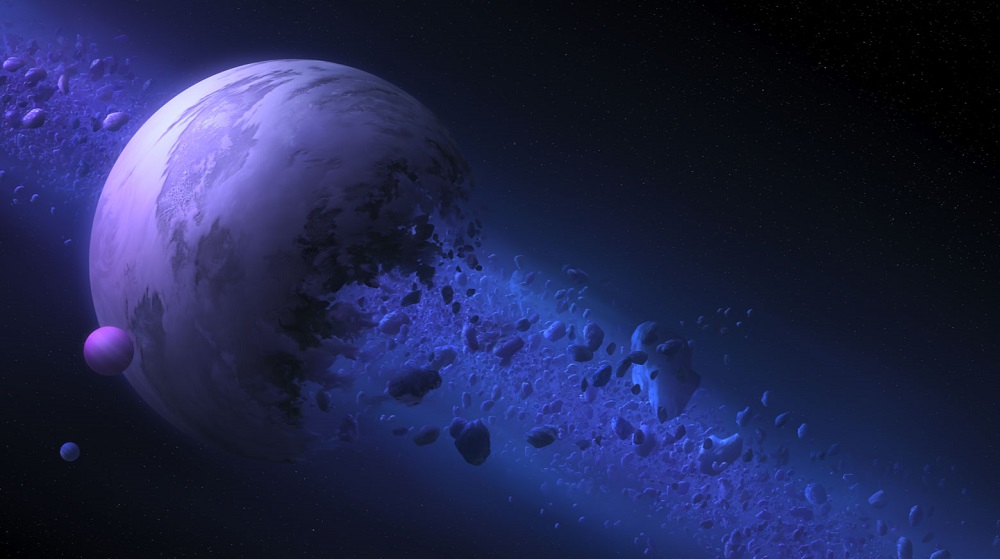
Star Wars art designers seem to have a tendency to carve chunks out of planets lately, be it to make them part of a massive superweapon, to create a hellish and/or exotic landscape, or to show that a place has gone through serious turmoil over the centuries. The latter of those led to the newest depiction of Concord Dawn in the Star Wars Rebels episode two weeks ago, “The Protector of Concord Dawn”, as shown in the picture above. Now, I won’t lie; it looks very cool, and makes for a beautiful and interesting background, more memorable than just what a normal planet with some moons in the darkness of space would be. But still—and Mike knew this when he tempted asked me to write this piece—I can’t put my astrophysicist’s brain aside when looking at it, and as such I can’t help but wondering: could a place like this really exist? Would a planetary body retain that shape after some unknown cataclysm blows away a big portion of it into fragments, or would everything collapse pretty soon under its own weight?
To answer this, one must first gather some basic information. For example, how big is the world in question? In the episode, the surface where the Protectors’ camp is located seems to match what we see of this bigger object from space. And if we assume that it is, we can tell that it has quite an Earth-like gravity (although lower gravity in Star Wars is typically represented like this, too), a comfortable atmosphere with clouds, landscapes that don’t seem so bad harboring what look like rivers or lakes, and an intact half that looks very much like a semisphere. Taking all that into account, I’d say this world is somewhere between the sizes of Mars and Earth (6,000 to 12,000 km in diameter). This is important because size and roundness are related when it comes to planets—If you make a list of all the objects in our solar system, you’ll see that everything with a size of 1,000 kilometers and up is round, no matter how violent its past. The biggest impact basins are no more than a few kilometers deep. Even the Earth is the result of the collision of two planet-sized objects that merged to form a bigger one, and we wouldn’t know if it wasn’t for the fact that this is how the Moon came to exist. Read More
